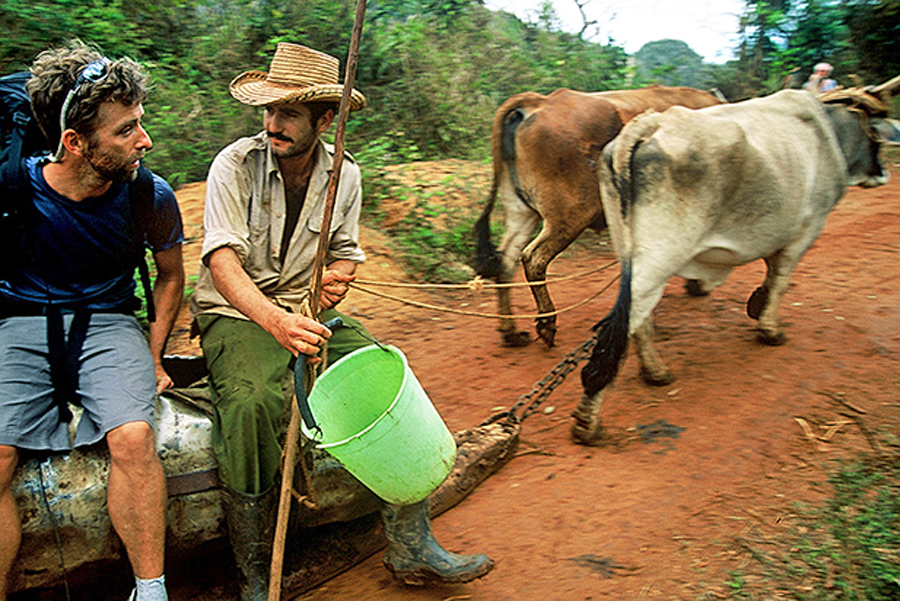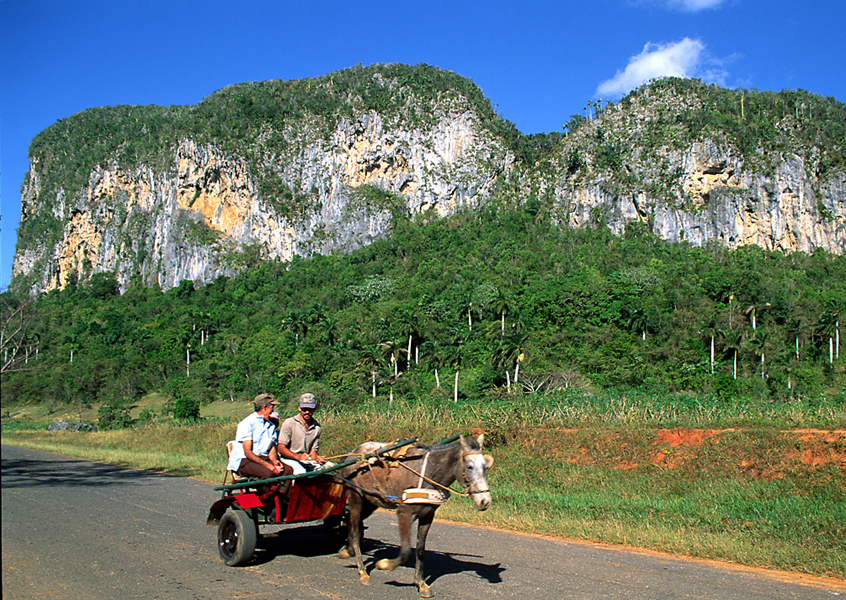Getting Around Cuba
For Cubans, transportation is one of the major hassles of life. Cubans spend hour hitchhiking and waiting for buses, tractors, and trucks, whether it’s to get to work, to shop, to visit hospitals and family.
For the tourists, however, getting around the island is relatively easy. A visitor may travel by air, train, bus, or rental car.
In general, the best way to get around is on foot, taxis, and Víazul buses to typical tourist destinations, such a Viñales, Trinidad, and Santiago de Cuba.
The other excellent option, specially for touring within cities such as Havana, is to hire a taxi for part or all of the day. Chauffeur is driver and tour guide. No hassle with traffic, directions or parking. Taxi drivers are accustomed to waiting through a two hour lunch or half day at the beach.
Your casa particular can usually arrange the taxi. The casa will likely get a commission kicked back by driver, and the driver will suggest restaurants and attractions that pay him a commission. Usually it’s worth the convenience. See Modes of Travel/The Role of Commissions.
Domestic Cubana Airline has replaced some of its old Soviet-era flying machines. Now, the fleet includes leased aircraft. Updated, but still not recommended. A leased jet crashed on take-off from La Habana in 2018.
Cuba has an antiquated but extensive train system. It is said to be the largest stream-powered train system outside of China. Reservations are necessary, and getting one can take a from a couple of hours to most of a day. The trains are even less reliable than the buses.
Getting to Viñales is about the easiest transport in Cuba. There are two bus lines, both government run. Lots of taxis, private and colectivos. Renting a car is expensive, a hassle, and usually not necessary. Within the town of Viñales everything can be reached on foot.
The two bus lines are Víazul and Autobuses Nacionales. Both now share the main bus terminal in Havana so you can try both. The terminal is on Ranco Boyeros, e/ Ave. 19 de Mayo y Bruzón.
If no space on bus, there will be many new and old classic taxis outside offering shared rides, usually for same price of bus. Víazul has service to tourist areas. It used to be an excellent deluxe carrier at reasonable prices. Its buses have gotten somewhat old and frayed.
Víazul busses go to most places visited by tourists, such as Viñales, Trinidad, and Santiago de Cuba. It’s said that now tickets must be bought online, and that booking attempted in Cuba is blocked — without a VPN. (Yes, like China and North Korea, Cuba prohibits use of a VPN. However unless want messages and your searches monitored by Cuba or blocked by the pervasive geo-restrictions of U.S. banks, credit cards, streaming, even Amazon, a VPN is required.) Here’s a current, over the top description of booking on Víazul. In fact, you can still book at Víazul stations, although best not to show up just before departure.
Easy to register and then book online with the Víazul website before come to Cuba or do so after in Cuba, if use a VPN and set IP address to one outside Cuba. Prices are in USD, even though Cuba says no dollars accepted, and a credit card from a U.S. bank works. Your credit card will be charged the exact dollar price, even though the transaction is prohibited by U.S. embargo and no one adhere to it more zealously than U.S. banks.
There are many new and old classic taxis outside the the bus terminal eager to negotiate a private or collective ride. If in Havana, most casa particulars can call for a taxi and save you the price of the ride to the bus terminal. It is best to negotiate the price before the taxi arrives.
Car rental are available (except during Christmas holidays) and expensive. Drop offs, instead of RT are difficult to find. Reservations mean nothing. There may be autos in the lot, but none may be operable. Gas stations are sufficient, but in 2022 and 23, prone to run out. Cubans and tourist used to be able to shop at Cupet stations. Now, don’t expect more than bottled water and a cafecito. When you rent, the agency carefully goes over each dent and verifies spare, jack, radio, etc. It is because these get stolen and are often missing. If you rent, you must find a secure garage or hire a guard for the night.
A few pointers for drivers. There are few road signs, and many badly deteriorated roads. Plan on picking up hitch-hiking Cubans for company and directions, although their directions may coincidently take you where they need to go. Since there is little traffic, driving in daylight is doable. At night, the roads include bikes, horses and horse-drawn carts, tractors, and, during the sugar harvest, huge tractors of sugar cane. Almost none will have lights. Axle-braking potholes are unmarked, commonplace, and appear at the speed of light.
Driving rules have few surprises, except that all drivers must stop at railroad crossings, and these are favorite haunts of cops and hitch-hikers. Also, cyclists are so unaccustomed to encountering vehicles that they casually wander along and across highways. When driving, give them a warning with a toot of the horn. The cyclists’ reactions will not be anger, but a wave of acknowledgment.





